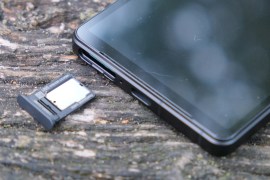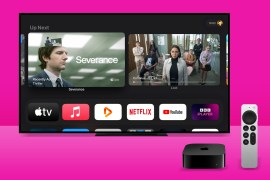Starlink Mini means you’ll be able to get online anywhere on earth
Starlink just launched its portable Mini satellite, meaning you can take satellite-powered internet connectivity with you wherever you are

Imagine you’re stuck in the middle of nowhere, miles away from civilisation, yet still being able to stream your favourite shows, work remotely, or even attend Zoom meetings without a hitch. That’s exactly what Starlink Mini does. It’s a portable satellite dish, that’s small enough to hook to a backpack. With the dish, you can connect to the internet from satellites up in space. But it works just like a normal router.
The dish and Wi-Fi router are bundled into a sleek, weatherproof package that’s significantly smaller and more energy-efficient than previous models. It’s about the size of a laptop, which means it can be powered by a USB-PD source capable of 100W (20V/5A). For the non-techies, this translates to using a small power bank for about an hour of usage or a solar generator for a few days.
Initially, the Starlink Mini was only available to existing Residential subscribers in the US. But it’s now open to a wider audience internationally. So, whether you’re parked up in the Rockies or chilling on a beach in Baja, you can stay connected without any fuss. The hardware itself will set you back $599, which you can order directly.
There are two service options: the Regional plan costs $150 per month for unlimited portable data in North America, with an option to pay per GB for in-motion use. Then there’s the Mini Roam plan at $50 per month, giving you 50GB of portable or in-motion data, with additional data available at a per-GB rate. Both services can be paused between your adventures, which is handy.
Wait, what is Starlink?
Alright, before we get too carried away, what exactly is Starlink? In essence, it’s SpaceX’s ambitious project to blanket the Earth with high-speed internet using a constellation of low Earth orbit (LEO) satellites. CEO Elon Musk envisioned this as a way to provide reliable internet access to even the most remote corners of the globe. Traditional internet infrastructure can be costly and impractical in certain areas. Imagine Openreach trying to deal with mountain villages, deserts, and isolated islands. That’s where Starlink comes in.

Starlink aims to offer high-speed, low-latency internet access worldwide. The goal is not just to connect those off the grid but also to provide a competitive alternative to existing broadband services in urban areas. With thousands of satellites already orbiting the Earth and many more to come, Starlink is on its way to becoming a game-changer in the internet service provider market. It’s already available to get internationally.
How does Starlink give you internet connectivity?
Now, how does Starlink actually work? Traditional satellites sit in geostationary orbit, around 35,000 kilometres above Earth. This distance results in high latency and slower speeds. In contrast, Starlink satellites are positioned in low Earth orbit, roughly 550 kilometres above the planet. This proximity means that data can travel much faster between the satellite and the user, resulting in lower latency and higher speeds.
The Starlink system comprises three main components: the satellites, the ground stations, and the user terminal (like the Starlink Mini or residential dish). The satellites communicate with each other using laser links, forming a mesh network in space. They relay data to and from the ground stations, which are connected to the internet’s backbone. The dish, connects to the satellites overhead, providing the end user with internet access. The dish is designed to automatically adjust its position to maintain the best possible connection with the satellites.
So, in a nutshell, your internet data travels from your device to the dish, then up to a satellite, across to another satellite if necessary, down to a ground station, and finally out to the internet. All this happens in a fraction of a second, allowing you to surf the web, stream videos, or conduct video calls seamlessly. It’s similar to the tech that powers Apple’s Emergency SOS via Satellite feature.


